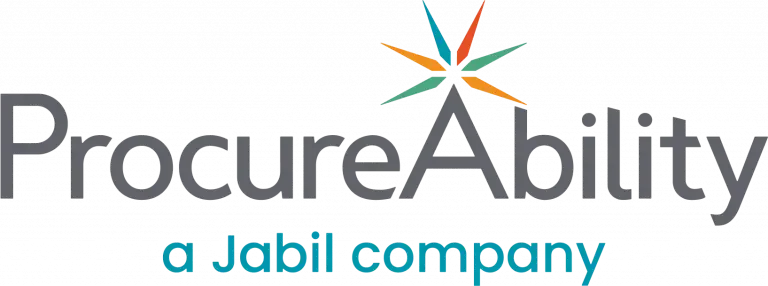
Supply chain resiliency is a critical business imperative. Organizations across industries are recognizing that their ability to withstand and recover from disruption directly impacts competitiveness, profitability, and customer trust. As disruptions become more frequent and unpredictable, resilient supply chains have moved from being a theoretical concept to a real-world differentiator.
What Makes a Supply Chain Truly Resilient?
Supply chain resilience means the ability to anticipate disruptions, adapt swiftly, and recover effectively, whether those disruptions stem from geopolitical shifts, natural disasters, regulatory changes, or supplier instability. But what does resilience truly look like in action? At its core, a resilient supply chain is built on three essential components:
- A diversified and agile supplier base that can respond to changing conditions
- Comprehensive visibility to monitor performance and risk across all supplier tiers
- Proactive, dynamic scenario planning that is regularly reviewed and tested
Let’s explore each of these critical elements in more detail.
1. Diversifying Your Supply Base for Agility and Continuity
One of the most effective ways to reduce supply chain vulnerability is to avoid over-reliance on a single supplier, region, or transportation mode. Depending too heavily on one source can lead to significant operational delays when disruptions occur. Instead, organizations should:
- Identify alternative or secondary suppliers for critical categories
- Explore nearshoring or onshoring options to minimize geopolitical risks
- Develop contingency plans ahead of time, even if switching isn’t immediately necessary
By taking a proactive rather than reactive approach to sourcing, organizations position themselves to maintain continuity and avoid last-minute crises.
2. Monitoring Risk Exposure Across the Entire Supply Base
Visibility into supplier performance and risk is a crucial driver of supply chain resilience. However, many organizations tend to limit their oversight to Tier 1 suppliers, which leaves them vulnerable to risks hidden further upstream in the supply chain. To enhance transparency and manage risk more effectively, it’s important to take a comprehensive approach. First, segment your supply base by strategic importance using proven frameworks like the Kraljic Matrix. This helps prioritize where to focus your resources and attention.
Next, invest in advanced technology solutions or forge partnerships that support multi-tier supply chain mapping. This broader visibility enables you to identify potential disruptions early and act proactively rather than reactively. In addition, establish regular performance reviews and risk assessments for your critical suppliers. Continuous monitoring allows you to track supplier health, identify emerging risks, and foster stronger collaboration.
By concentrating efforts on your top-value and highest-risk suppliers, you not only mitigate potential issues but also streamline oversight, ensuring your risk management efforts are both targeted and manageable. Ultimately, improving multi-tier visibility transforms your supply chain from a reactive operation into a resilient, insight-driven engine capable of navigating uncertainty.
3. Scenario Planning That Goes Beyond the Basics
Resilient supply chains anticipate disruptions. This proactive mindset is where scenario planning becomes essential. By modeling a variety of risk scenarios and developing response strategies in advance, procurement and supply chain leaders can make more informed, timely decisions when faced with unexpected challenges.
To maximize the effectiveness of scenario planning, it’s important to update your scenarios regularly, taking into account shifting market conditions and real-time data. Additionally, validating these plans through simulations and tabletop exercises helps ensure they’re practical and actionable when needed. Furthermore, using the most likely scenarios as a basis for preemptive changes or strategic investments allows organizations to stay ahead of potential disruptions, rather than scrambling to catch up. The earlier you detect emerging risks, the greater your range of options for mitigation, turning uncertainty into opportunity.
Building Supply Chain Resilience: The Key to Thriving Amid Disruption
Supply disruptions are now a consistent reality of the global economy. Whether triggered by natural disasters, trade policy shifts, or logistics capacity constraints, the ability to respond swiftly and effectively can mean the difference between minor delays and significant revenue losses. By proactively building a resilient supply chain, organizations can maintain service levels during disruptions, reduce overreliance on single suppliers or regions, strengthen supplier relationships, and safeguard business continuity. In doing so, they also protect their reputation with customers and stakeholders. In today’s unpredictable environment, resilience serves as a critical enabler of growth. Organizations that prioritize visibility, agility, and proactive scenario planning will not only withstand future disruptions but thrive despite them.



